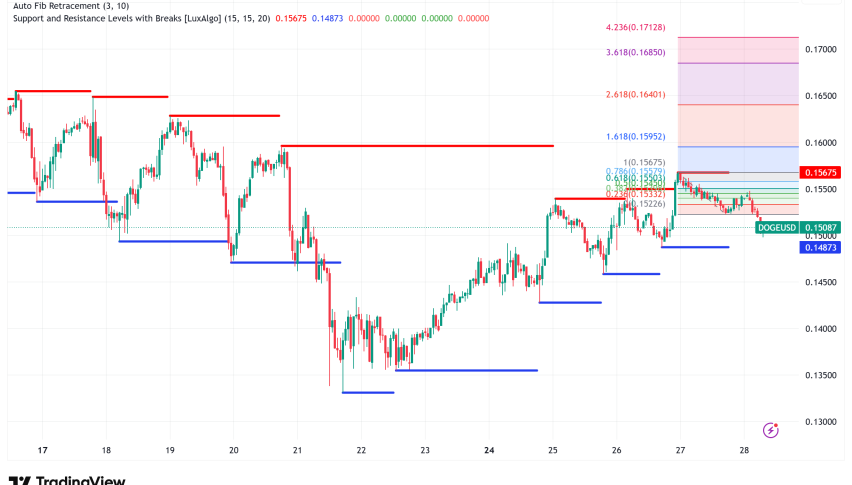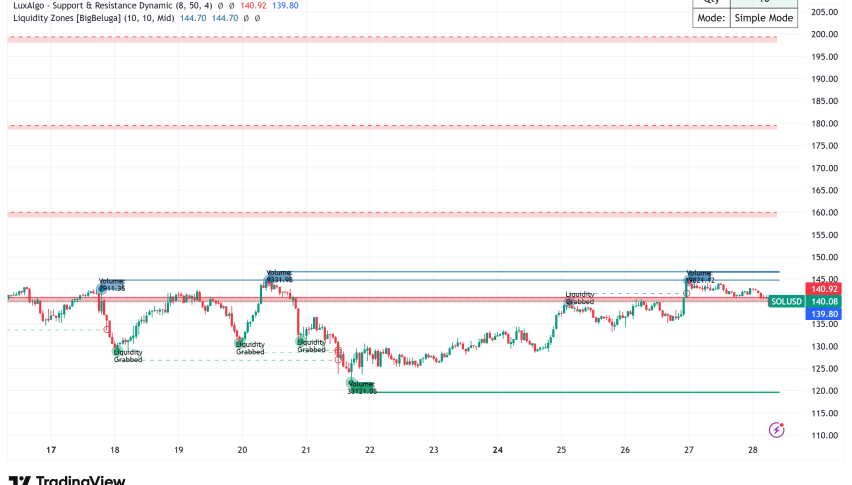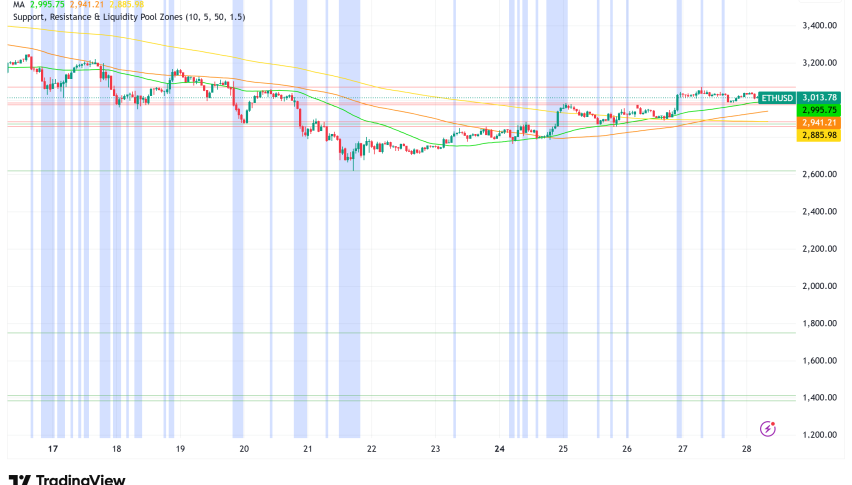US Dollar Index DXY Retreats as Trump’s Tariff Blitz Weighs on Sentiment
The US Dollar Index (DXY) fell 0.2% on Thursday, although it stayed above the 97.3 level. This was because of President Donald Trump's
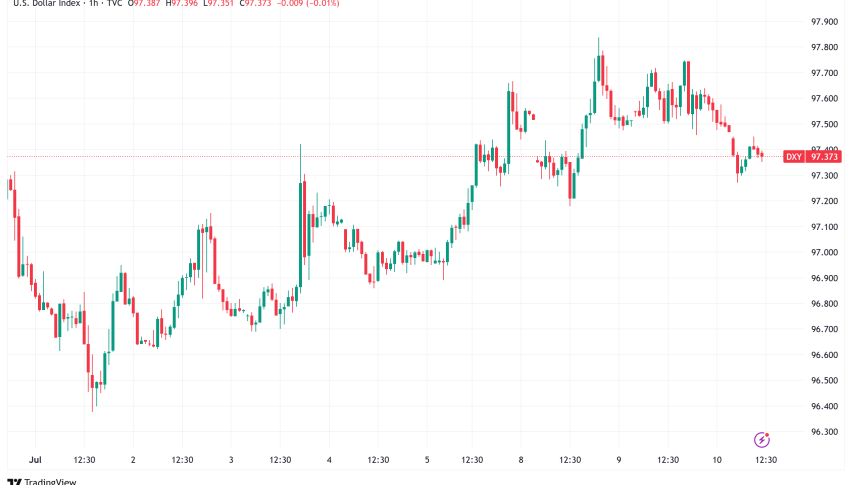
Quick overview
- The US Dollar Index (DXY) fell 0.2% but remained above 97.3 due to President Trump's tariff campaign and uncertainty surrounding Federal Reserve policies.
- Trump announced a 50% duty on US copperfill imports and Brazilian commodities, intensifying the trade war and affecting 21 nations with new tariffs.
- The Federal Reserve's cautious stance on interest rate decreases and rising national debt are contributing to concerns about the economy and the dollar's weakness.
- The weaker dollar is benefiting commodity markets, particularly precious metals, while ongoing trade tensions could negatively impact overall market sentiment.
The US Dollar Index (DXY) fell 0.2% on Thursday, although it stayed above the 97.3 level. This was because of President Donald Trump’s strong tariff campaign and uncertainty about Federal Reserve policies, which are still affecting currency markets.
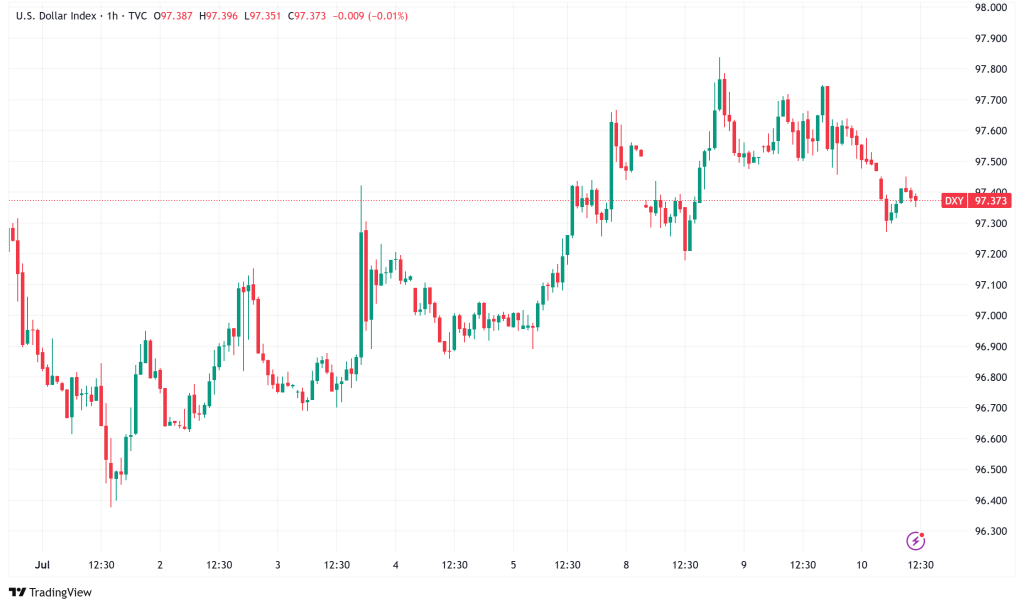
The dollar’s drop comes at the same time as US Treasury yields as a whole drop, with the benchmark 10-year note falling from three-week highs. Gold prices were up 0.1% to $3,316.77 per ounce since the currency was weak and the cost of storing non-yielding assets was down.
Trump’s Tariff War Intensifies
On Wednesday, Trump took his trade war to a whole new level by announcing a huge 50% duty on US copperfill imports and Brazilian commodities. Both tariffs will start on August 1. The government also sent tariff letters to seven more trading partners, increasing the total number of nations facing new tariffs this week to 21. These include big economies like Japan and South Korea.
The 25% tariffs on these partners will start on August 1 unless something changes at the last minute. However, market watchers say that investors may be getting “tariff fatigue” as the steady flow of trade news starts to have less of an effect on the market.
“Each fresh headline seems to have less of an effect on the market. “Tariff fatigue is here, and traders need a new reason to wake up volatility from its lull,” said Matt Simpson, a senior analyst at City Index.
Fed Policy Remains Cautious
Minutes from the Federal Reserve’s June 17-18 meeting showed that only “a couple” of officials were in favor of possible interest rate decreases as early as July, which is bad news for the dollar. Most officials want to wait until later in the year because they are still worried about inflation, especially because Trump’s tariffs are going up.
At its June meeting, the Federal Open Market Committee unanimously agreed to keep rates the same. The next policy decision will be made on July 29–30. This cautious attitude shows that there is still uncertainty about how trade policies will effect inflation and economic development.
Broader Economic Concerns Mount
The dollar is weak because of rising concerns about the economy. The US national debt reached an all-time high of $36.6 trillion after a single-day surge of $367 billion. This spike came after Trump signed a bill that raised the debt ceiling by $5 trillion.
Indicators in the housing market are also sending up red flags. The amount of new single-family homes for sale is getting close to 10 months’ worth, which is a level that has been linked to recessions in the past. Experts say that high loan rates and “demand evaporation” are two of the main reasons why the housing market is sluggish.
Market Implications
The dollar’s drop is helping several commodity markets, especially precious metals. The weaker dollar and lower bond yields are both pushing up the price of gold. Silver, on the other hand, rose 0.3% to $36.44 per ounce.
But the trade conflicts that are still going on could hurt the mood of the market as a whole. Investors are keeping a careful eye on how rising trade tensions can influence risk assets because US import tariffs could hurt business profits, especially in the tech sector.
Bitcoin and the S&P 500 are still closely linked, with a correlation of 68%. This means that if trade tensions cause a general risk-off mood in stock markets, cryptocurrency markets could also feel the effects.
Outlook for the US Dollar
Traders are keeping an eye on the DXY as it stays above 97.3 for new catalysts that might either make the dollar weaker or cause it to turn around. The Federal Reserve meeting on July 29 and 30 will be very important, as will any news about the continuing trade talks.
As rumors build about possible changes in the leadership of the Federal Reserve, with Trump apparently looking for candidates to succeed Chair Jerome Powell, whose term ends in May 2026, uncertainty about monetary policy is likely to continue to be a major factor in the dollar’s moves in the coming months.
- Check out our free forex signals
- Follow the top economic events on FX Leaders economic calendar
- Trade better, discover more Forex Trading Strategies
- Open a FREE Trading Account
